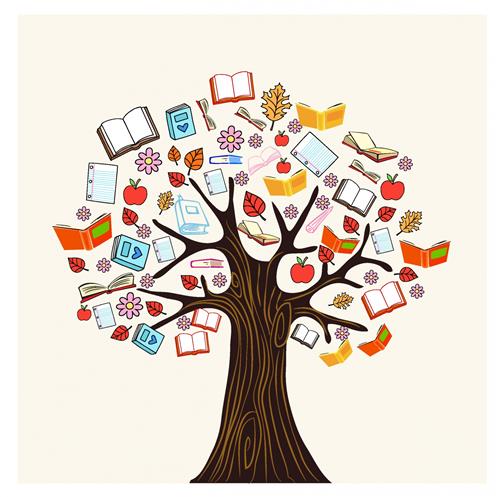Elementary Academics
-
English Language Arts (ELA)

Avoca Elementary School uses a balanced literacy approach to instruction that incorporates the Fountas and Pinnell Classroom for Reading and the Lucy Calkins Writer’s Workshop Units of Study as resources to align to the New York State ELA Standards. Follow this link to learn more about the New York State Learning Standards for English Language Arts and Literacy
ELA Resources:
The Fountas and Pinnell Classroom: The Fountas and Pinnell Classroom supports whole group, small group, and independent reading instruction. The components of the F&P Classroom include:
- Interactive Read Aloud: The teacher reads aloud a selected text to the students while occasionally pausing for questions and discussions
- Reading Mini Lessons: Explicit Instruction to the whole group of students about a principle that can be applied to their own reading
- Shared Reading: The teacher and students read aloud a book together to promote exposure of more difficult texts.
- Phonics, Spelling, and Word Study: Explicit Instruction to the whole group of students to help them learn about the use of sounds, letters, and words.
- Guided Reading: Students work in small groups to read and answer questions about a text at their instructional reading level
- Independent Reading: Students read self selected books and share ideas with their teacher and peers through brief mini lessons and conferencing.
Lucy Calkins Writer’s Workshop Units of Study: The Units of Study help teachers provide explicit instruction and guided practice in opinion/argument, information, and narrative styles of writing.
Mathematics
Our mathematics instruction utilizes the New York State Math Modules and McGraw Hill resources to teach the concrete, pictorial, and abstract understanding of math to align to the New York State Mathematics Standards. Follow this link to learn more about the New York State Learning Standards for Mathematics.
Math Resources:
McGraw Hill Mathematics
Science
Avoca elementary utilizes an inquiry-based method of instruction for science through the FOSS resource.
Social Studies
Avoca utilizes the New York State Social Studies framework as a guide for instruction. Follow this link to view the New York State K-8 Social Studies Framework.
Curriculum Tools & Resources
Below you will find each grade level’s curriculum tools/resources overview and a link to the standards based report card. Reading Level Information comes from the Fountas and Pinnell Text Gradient Level Document. Please click on your child’s grade level to view the information.
Kindergarten | First Grade | Second Grade | Third Grade | Fourth Grade | Fifth Grade | Reading Levels
Standards-based Report Cards
Click on your child's grade level to view a sample of that grade's report card
Kindergarten | First Grade | Second Grade | Third Grade | Fourth Grade | Fifth Grade
How to read your child's standards-based report card.
This elementary students (grades K-5) are assessed using a standards-based report card. The decision to use this type of report card is grounded in our desire to communicate student performance more accurately to parents. Traditional report cards showed overall subject are scores. In contrast, a standards-based report card exposes parents to standards and skills students are working on at their grade level. Scores, as indicated below, are performance based and give an account of a student’s trajectory toward grade level proficiency. Our hope is that these report cards will generate good discussion and provide parents with better information regarding their child’s needs and accomplishments.
Level
Definition
4
Students receiving a 4 are excelling in that standard for their grade level. They have reached a level of performance expected at their grade level with consistency, accuracy, independence and quality.
3
Students receiving a 3 are proficient in that standard for their grade level. They demonstrate a level of understanding that is appropriate and sufficient during the course of that marking period.
2
Students receiving a 2 are partially proficient in that standard for their grade level. They demonstrate knowledge, skills and practices required as long as they have support and monitoring from an adult.
1
Students receiving a 1 are still acquiring the prerequisite skills in order to understand the content or apply the skill of the grade level standard. Students need additional adult assistance and support in order to gain foundational standards leading to grade level standards.
It takes more than “good grades” to be successful. For this reason, you will find “Habits That Support Learning” on the back of each report card. These habits were carefully chosen and reflect habits/characteristics necessary to be college and career ready. Sometimes these habits warrant greater focus and discussion than subject area grades.

